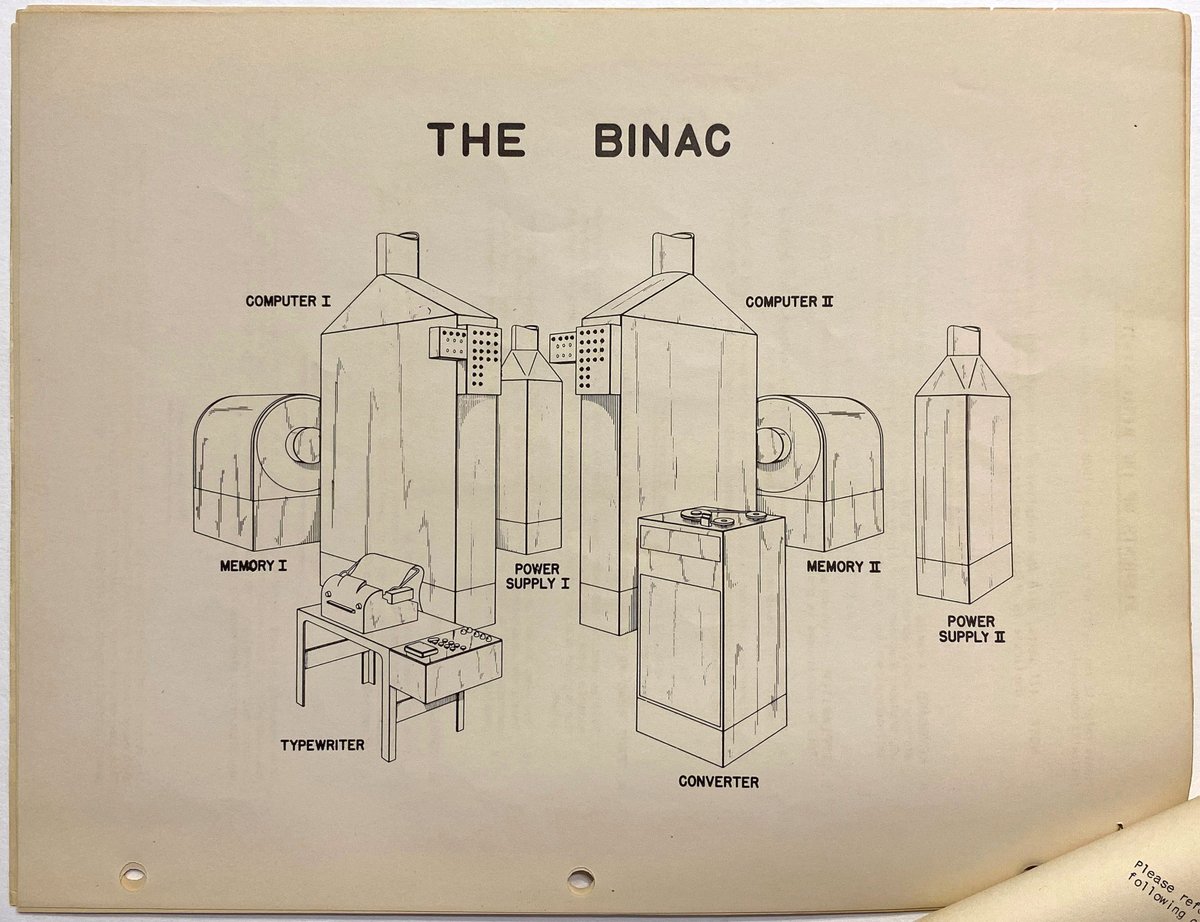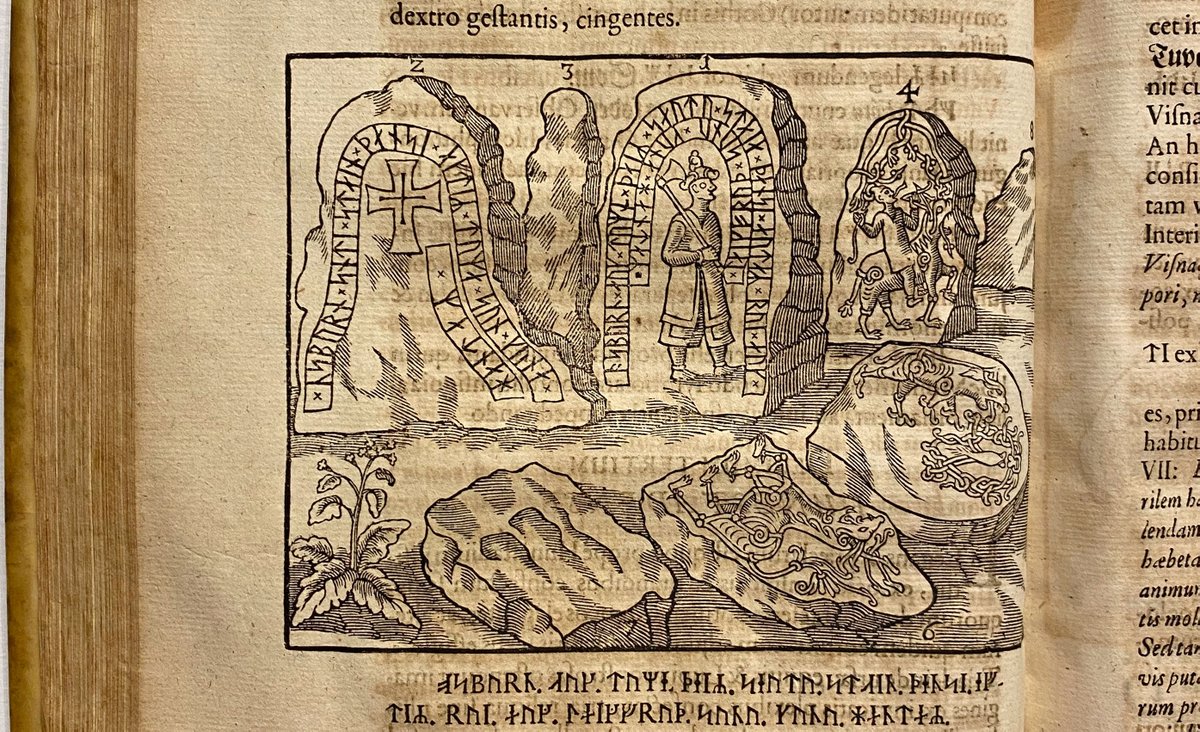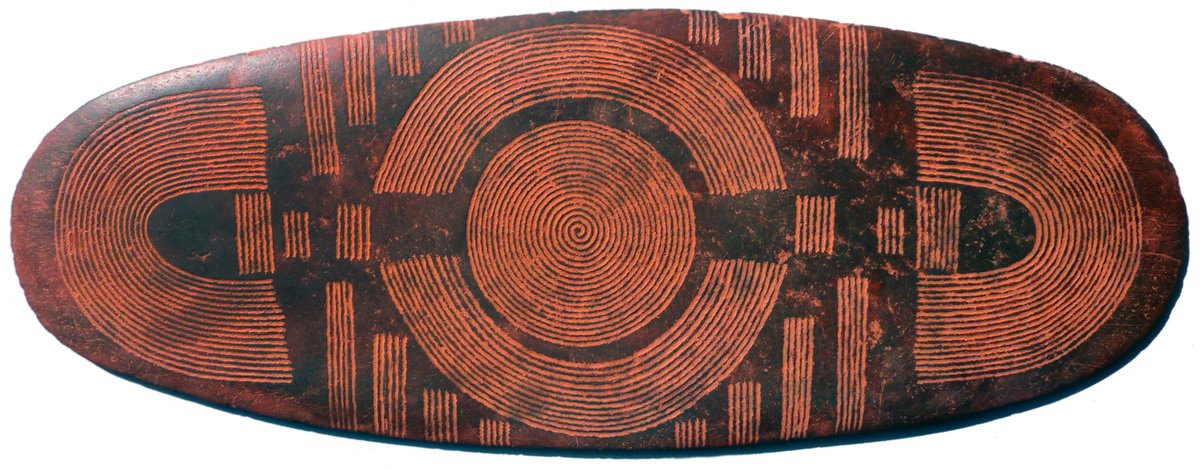
The only known copy of the world’s first electronic computer manual.
Operating & maintenance manual for the BINAC binary automatic computer built for Northrop Aircraft Corporation 1949. Eckert-Mauchly Computer Corp, Philadelphia 1949. Written by Joseph Chapline (1920-2011). 1/5
Operating & maintenance manual for the BINAC binary automatic computer built for Northrop Aircraft Corporation 1949. Eckert-Mauchly Computer Corp, Philadelphia 1949. Written by Joseph Chapline (1920-2011). 1/5
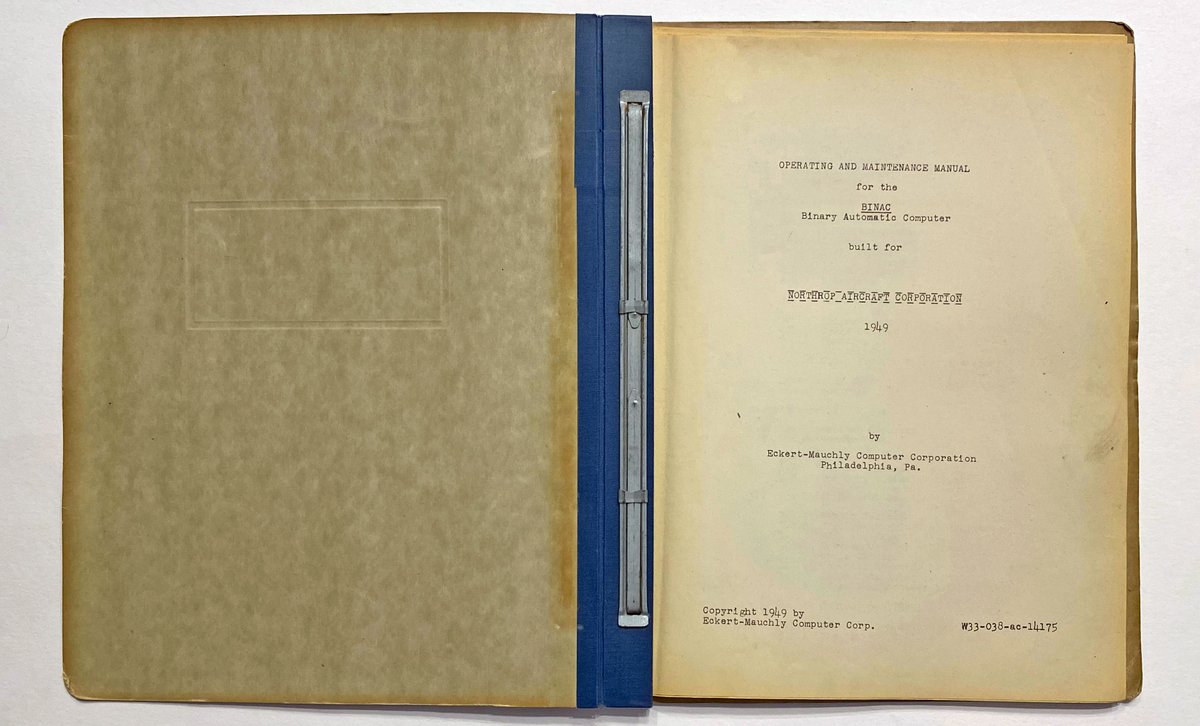
This is the only known copy of the world’s first electronic computer manual, and the only record of how the BINAC actually operated. It is also the model for the countless numbers of operating manuals for computers that were written in the following decades. 2/5 


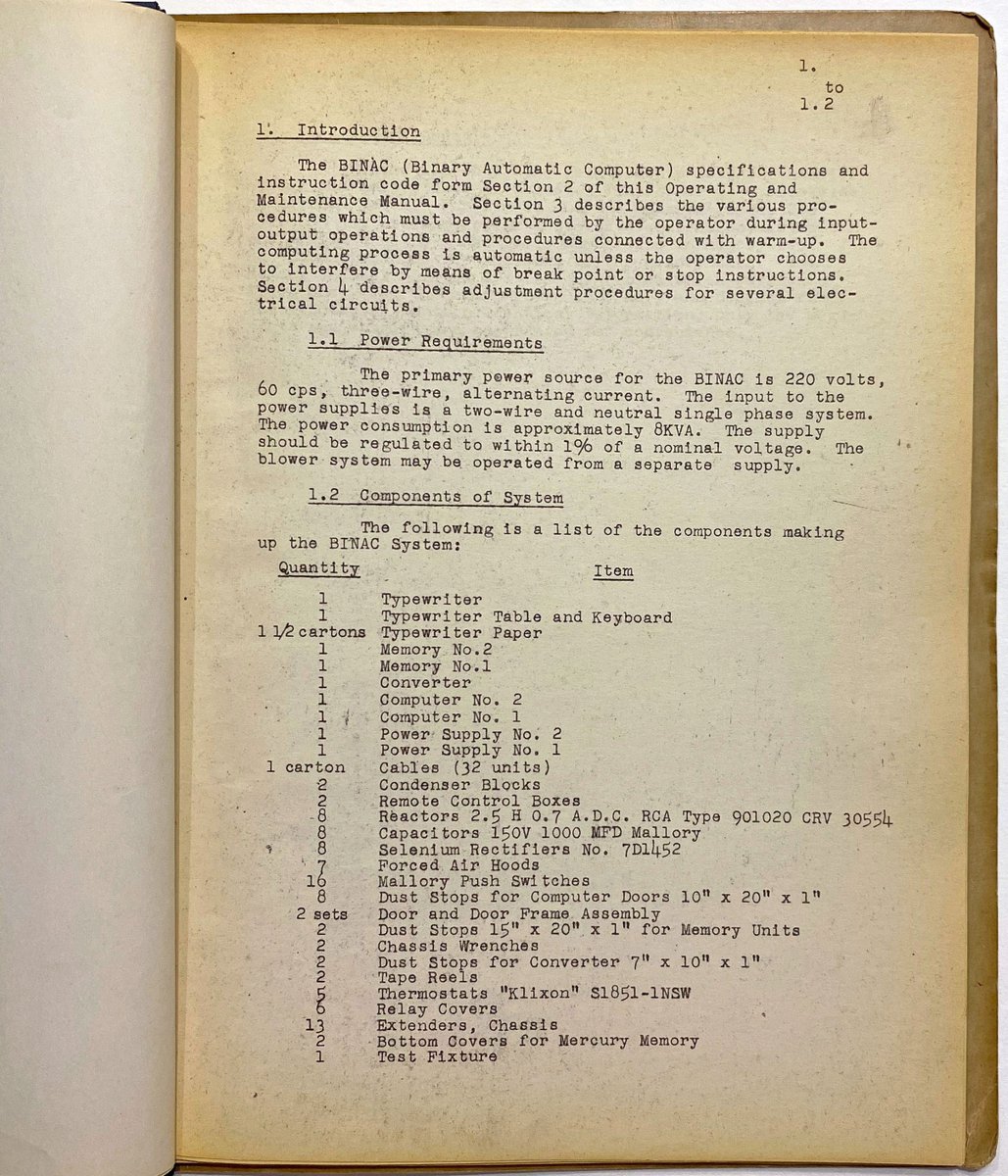
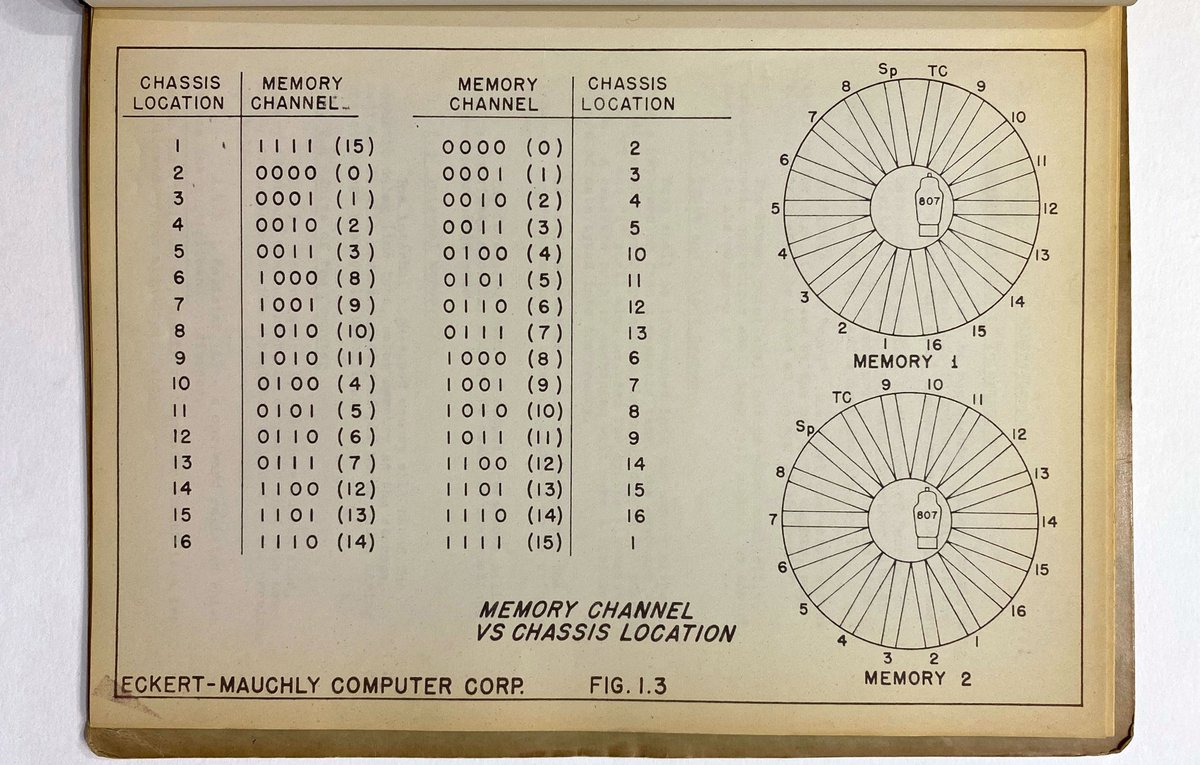
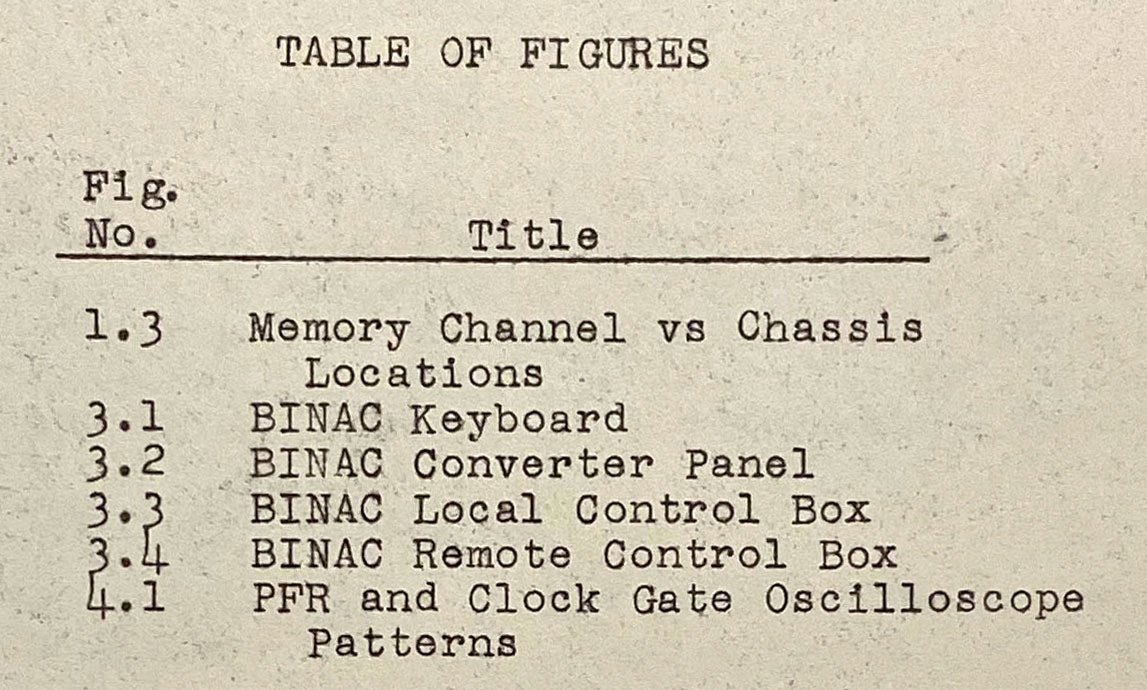
OCLC records no copies of this work in libraries, and there was no copy in the Origins of Cyberspace collection. As only one BINAC was ever built, it is likely that only a handful of copies of the manual were ever produced. 3/5 

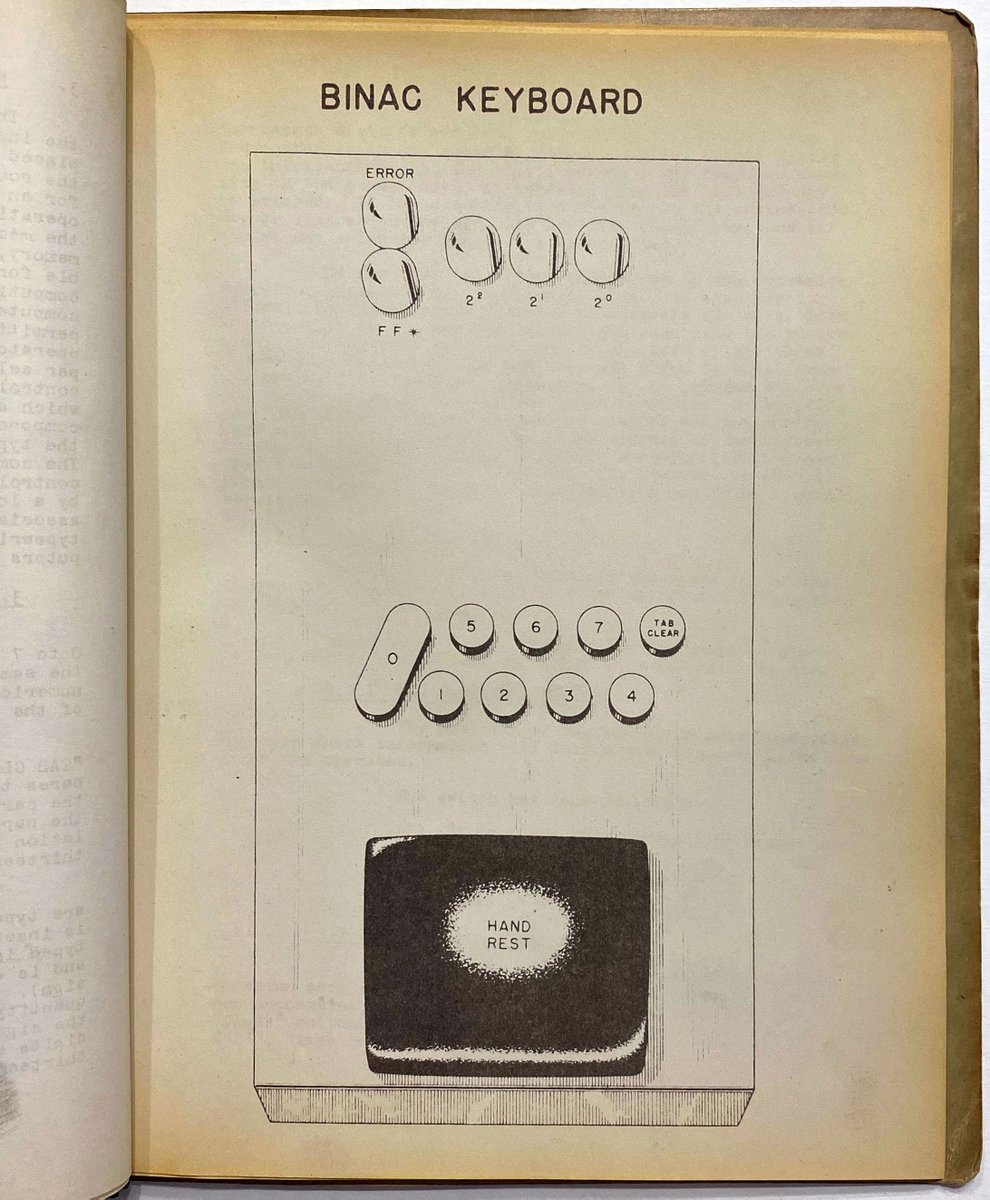
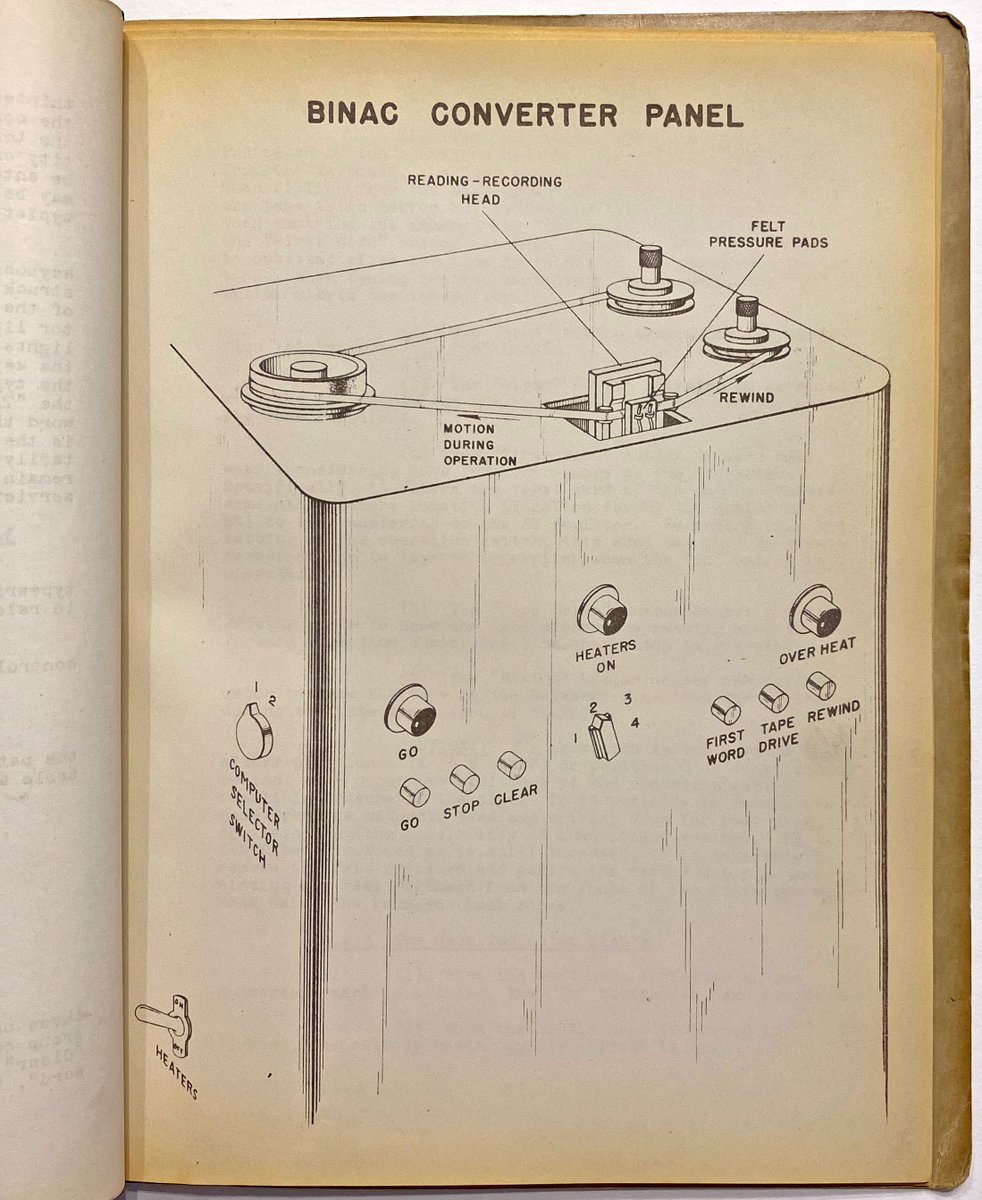
Eckert & Mauchly’s BINAC was the first stored-program computer to be fully operational, since the EDVAC, which was designed to be the first stored-program computer, did not become operational until 1952. The BINAC was also the first stored-program computer ever to be sold. 4/5 

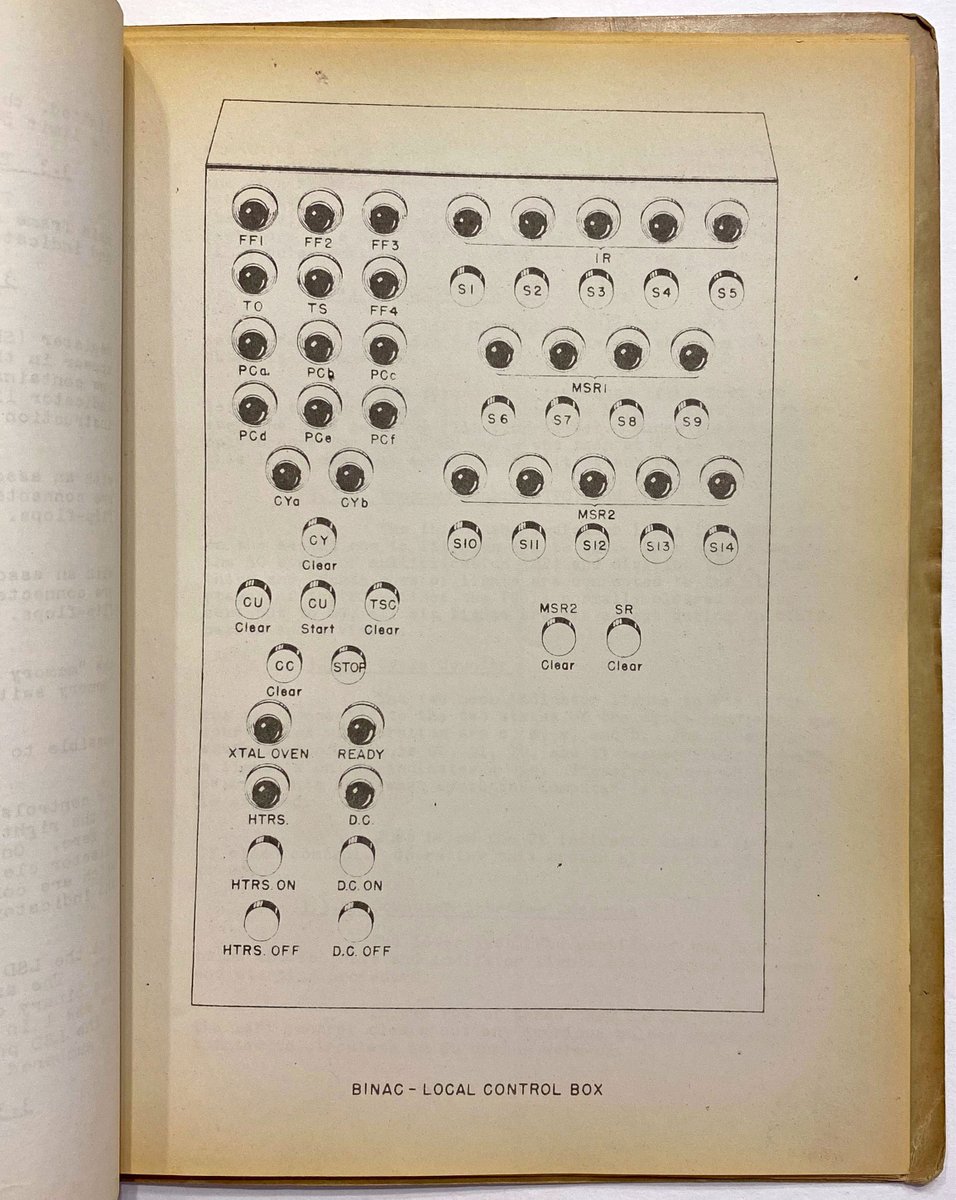
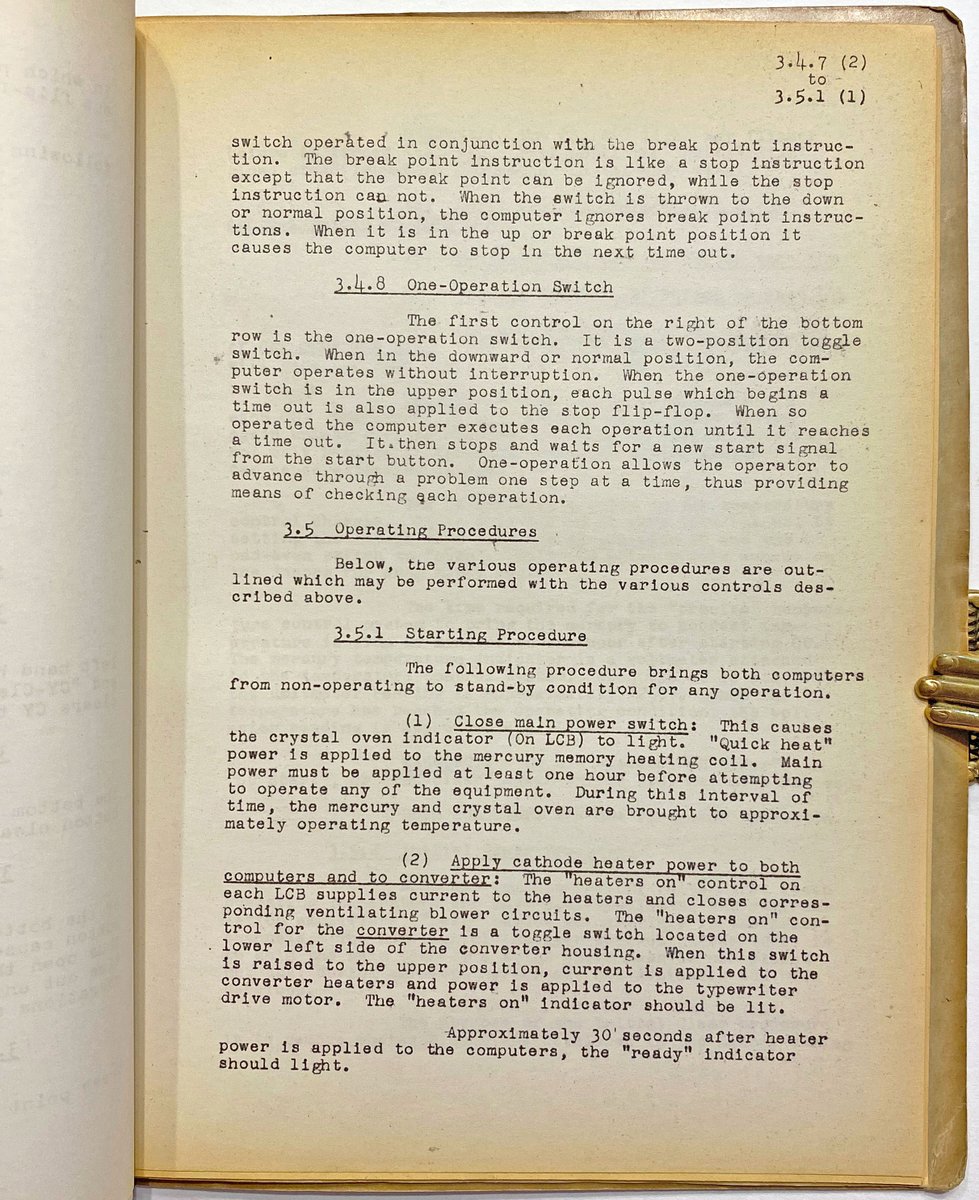
This is the first time some of these images above have ever been shown online. 5/5
"The BINAC. A product of the Eckert-Mauchly Computer Corp. Eckert-Mauchly Computer Corp, 1949".
Reproduced typescript, 8 stapled sheets. The sales brochure for the first stored-program electronic computer produced in the United States & the first electronic computer ever sold.
Reproduced typescript, 8 stapled sheets. The sales brochure for the first stored-program electronic computer produced in the United States & the first electronic computer ever sold.
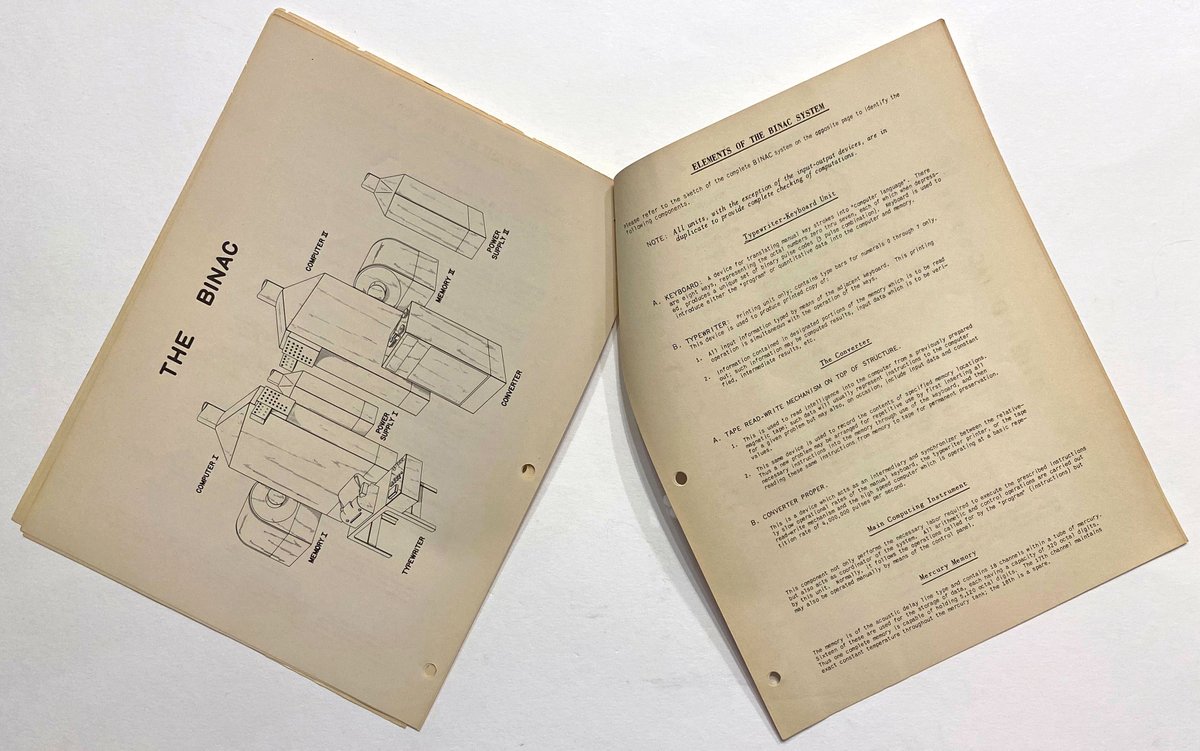
"BINAC. Northrop Aircraft, Inc. Description of Northrop Computing Center. September 16, 1950".
Mimeographed typescript on engraved Northrop letterhead. The first description of a corporate computing center. 1/2


Mimeographed typescript on engraved Northrop letterhead. The first description of a corporate computing center. 1/2
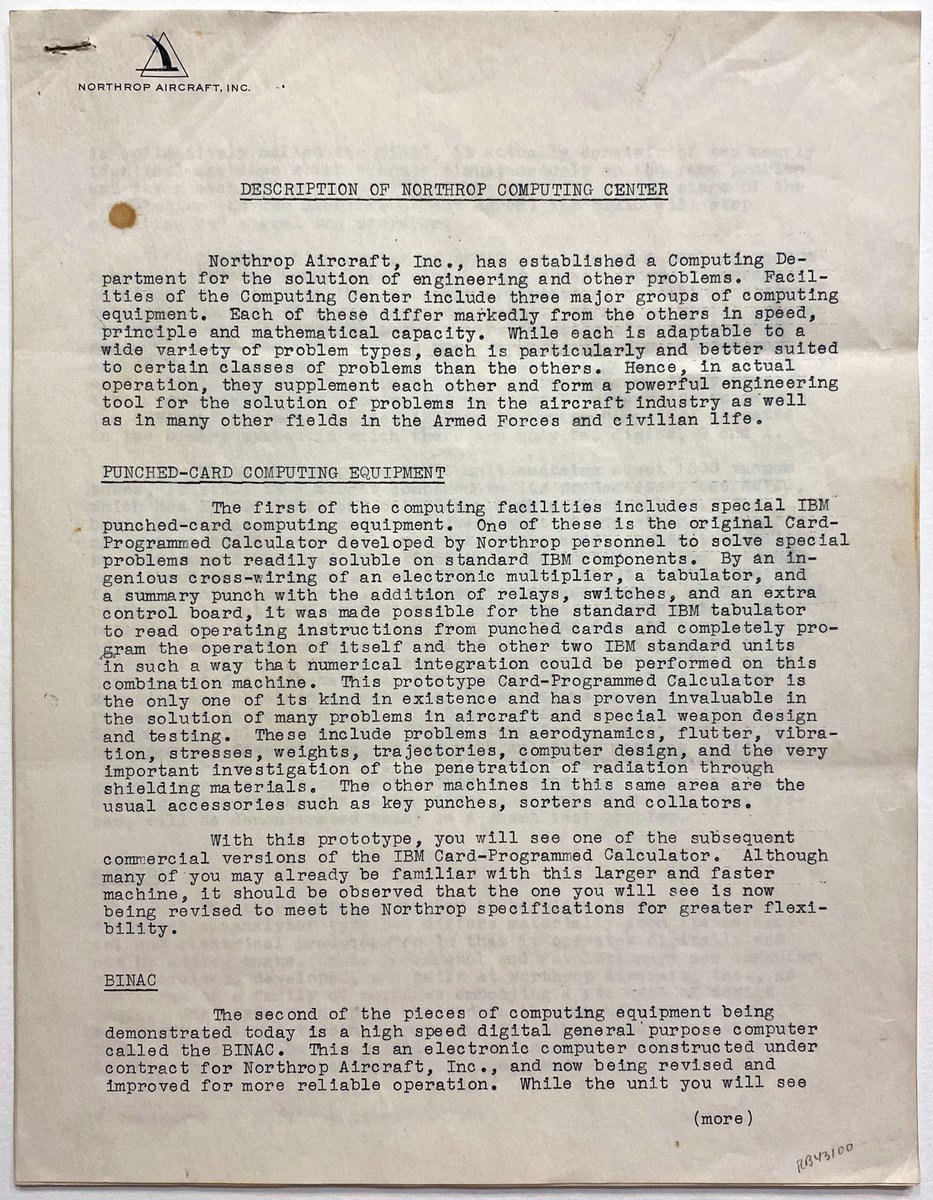
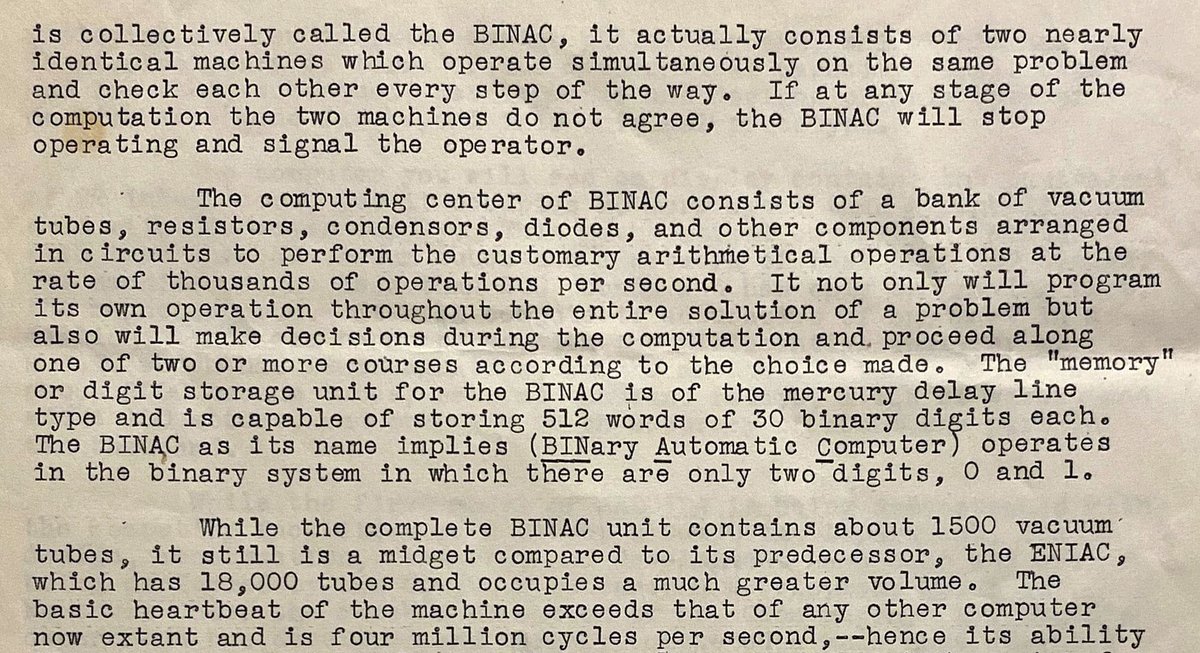

This is a possibly unique document from the first corporation to purchase an electronic computer, demonstrating the BINAC’s functionality a year after its completion and delivery. 2/2 

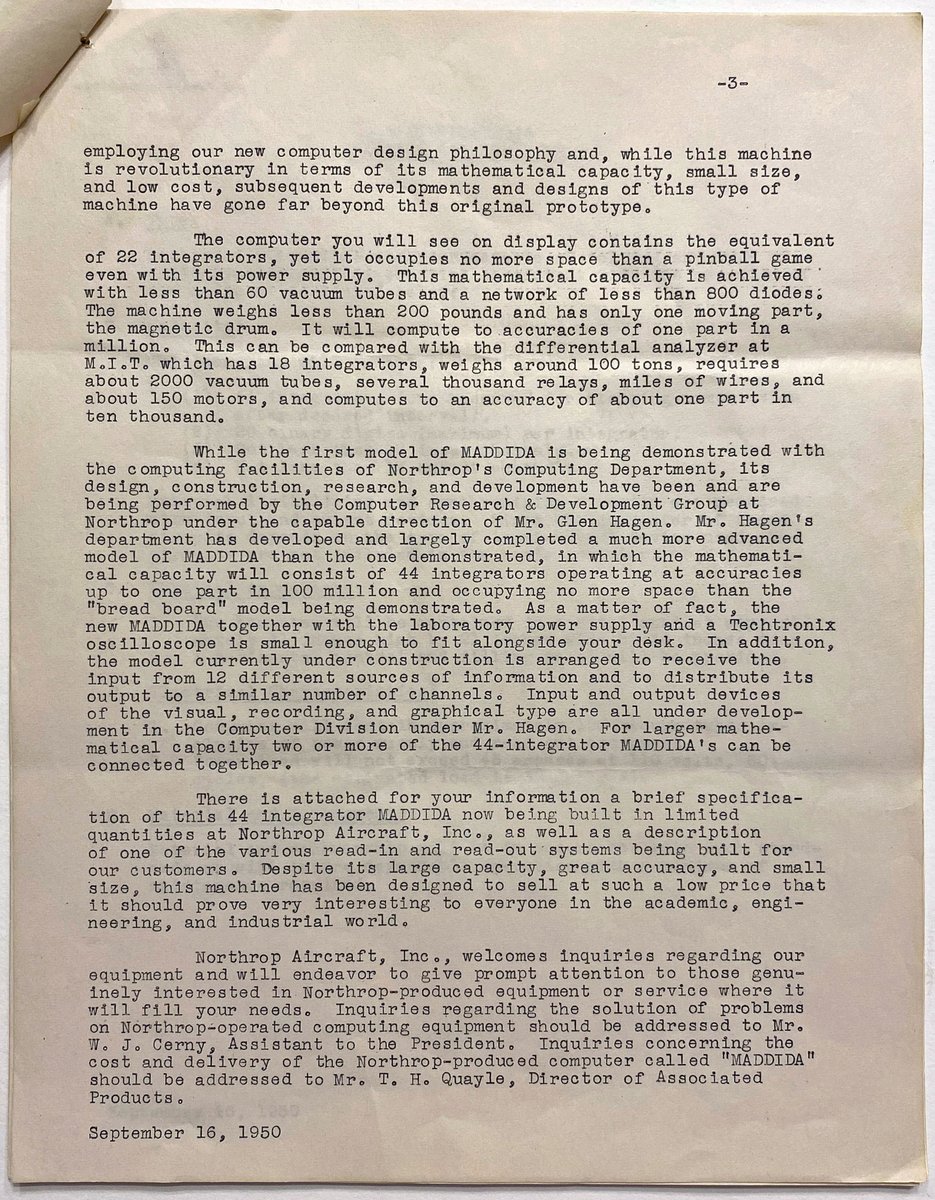
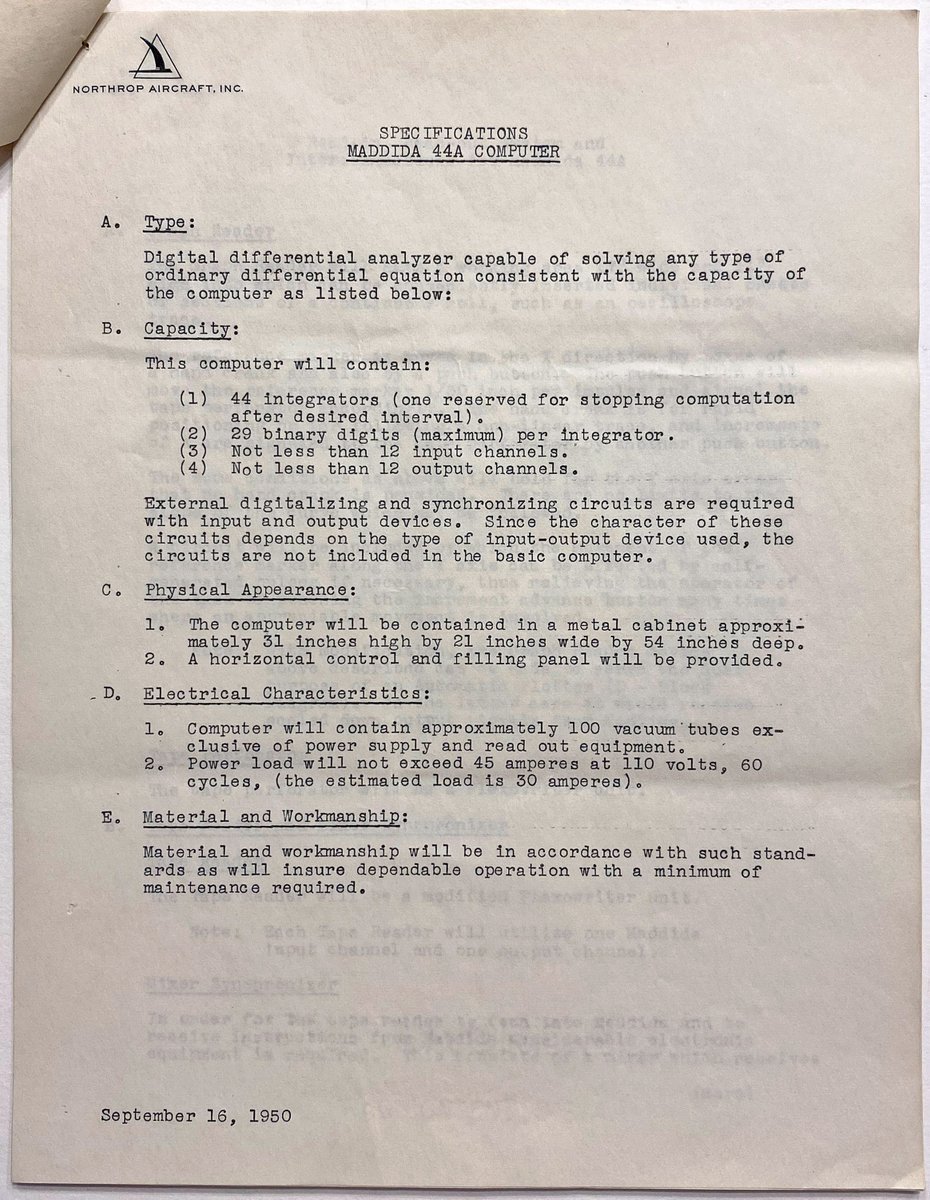
"The 'memory' or digit storage unit for the BINAC is of the mercury delay line type and is capable of storing 512 words of 30 binary digits each. [...] The basic heartbeat of the machine exceeds that of any other computer now extant and is four million cycles per second..." 

• • •
Missing some Tweet in this thread? You can try to
force a refresh
